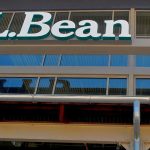S&P Global Ratings raised the debt ratings outlook of Samsonite International S.A., the parent of Gregory and High Sierra, as the company reported strong operating performance in the third quarter ended September due to both revenue growth and ongoing operational efficiency trends, which enabled it to accelerate its deleveraging.
S&P said it now expects the company’s adjusted leverage to be close to 2x at the end of 2023 compared to its previous forecast of 2.7x.
S&P’s outlook on Samsonite was improved to positive from stable and all its debt ratings were affirmed, including its ‘BB’ issuer credit rating. The positive outlook reflects the potential for an upgrade if Samsonite continues to demonstrate sustained strong performance amid stable demand in the travel industry.
Samsonite’s core brands include Samsonite, Tumi and American Tourister. Smaller brands include High Sierra, Kamiliant, ebags, Xtrem, Lipault, Hartmann, Saxoline, and Secret.
For the trailing 12 month (TTM) period ended Sept 30, 2023, S&P Global Ratings-adjusted leverage improved to 2.1x compared to 3.3x in the TTM period ended Sept 30, 2022 due to top-line growth and margin expansion. On a year-to-date basis, revenues reached $2.7 billion, which supported around $645 million of S&P Global Ratings-adjusted EBITDA generation, surpassing 2019 (pre-COVID) levels for the same period.
S&P said in its analysis, “The significant improvement in margins over pre-COVID levels continues to reflect management’s successful execution of fixed-cost structure refinement, which included headcount reductions, store closures, and corporate spending cutbacks. We believe this intent focus on operational efficiency, combined with a significant recovery in the travel industry, has allowed Samsonite to enhance profitability even against a difficult macroeconomic backdrop. As the exponential growth due to recovery in the travel industry tapers off and begins to approach a normalized level in 2024 and beyond, we expect EBITDA margin to remain in the low-20 percent range, supporting a leverage profile around 2x.
“We expect the company to sustain margins at these higher levels driven by ongoing recovery in travel demand and growth at the higher-margin Tumi and Samsonite brands. Samsonite has reported double-digit growth for the past several quarters, with revenues up 21 percent (on a constant currency basis) in the third quarter, benefiting from the recovery and increase in travel demand. Gross margins improved 460 basis points (bps) compared to the third quarter of 2022 reflecting growth in the higher margin Tumi and Samsonite brands, which were up 29.8 percent and 20.1 percent (on a constant currency basis), respectively, in the third quarter. Improvement was also driven by Asia, the region with the highest gross margin and increasing its share of net sales. We expect these positive trends to continue and forecast revenue growth of about 30 percent alongside continued leverage of the company’s operational efficiencies, which supports S&P Global Ratings-adjusted EBITDA margin improving 150 bps to around 23.0 percent in 2023.
“We anticipate EBITDA margin to be sustained around this level as growth rates at the higher margin Samsonite and Tumi brands remain ahead of the company’s other brands and revenue contribution from Asia remains robust, amid some moderation in revenue growth as travel demand normalizes. Though we expect softening consumer spending, consumers continue to show a willingness to spend on experiences, including travel, which bodes well for Samsonite as they return to a more normalized operating environment.
“We expect significant free operating cash flow (FOCF) generation, supported by an asset-light business model, allowing the company to operate with leverage around 2x. We forecast the company will generate free operating cash flow of more than $300 million in 2023 improving to over $400 million in 2024, driven by increasing EBITDA, strategic capital investment, and improvement in net working capital efficiency. That said, the company took a hiatus on cash distributions to shareholders in 2020 to shore up liquidity for the business following the onset of COVID-19, and we note that a resumption of shareholder-friendly activities could diminish cash flow and limit credit metrics. Although not in our forecast, we also remain cognizant that the pursuit of future debt-funded acquisitions, such as the 2016 Tumi deal, may drive leverage beyond the company’s stated 2x target.
“The positive outlook reflects that we could raise our ratings over the next 12 months if the company maintains S&P Global Ratings-adjusted EBITDA margin in the low-20 percent area supporting a leverage profile below 2x.”
Photo courtesy Gregory















